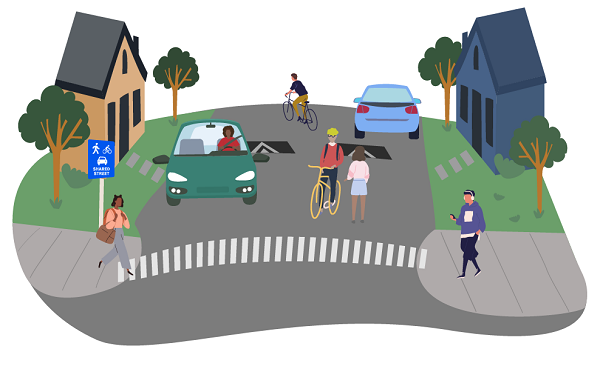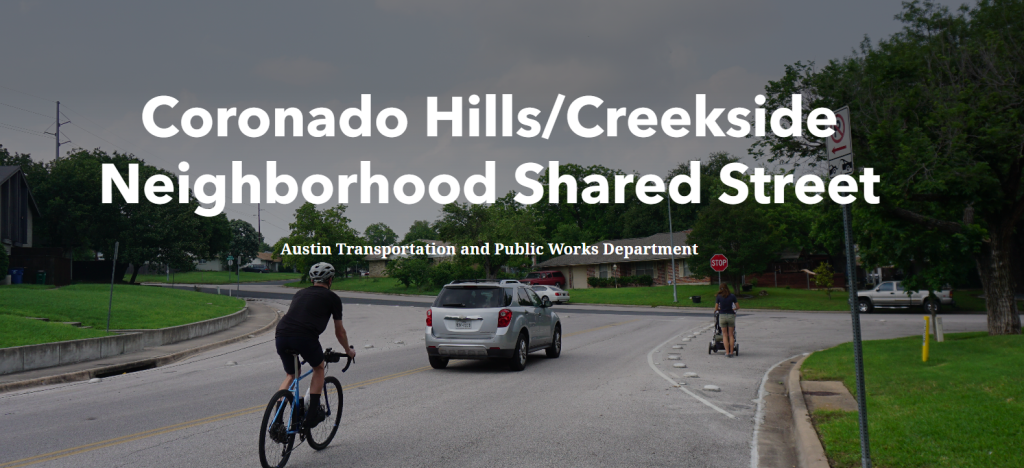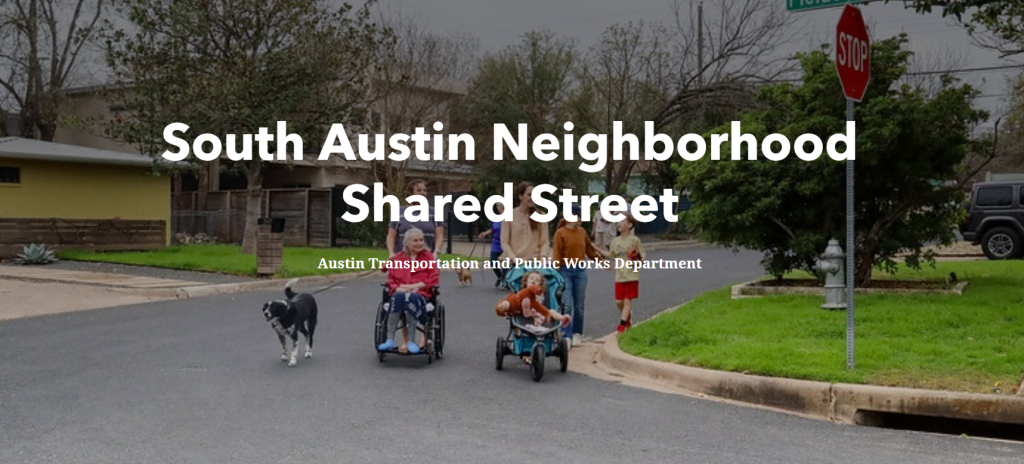The City of Austin is testing a new program to make some neighborhood streets without sidewalks safer and more comfortable for walking, bicycling, and rolling. The Shared Streets program uses traffic calming and pedestrian-centered design to accommodate all travel modes, ages, and abilities.

Shared Streets are environments where people walking, bicycling, and driving share the same space in a way that prioritizes the safety and comfort of pedestrians while allowing for the movement of bicycles and motor vehicles.
The Shared Streets program aims to make neighborhood streets without sidewalks safer and more comfortable for walking, bicycling, and rolling. The goal is to improve safety and mobility for people of all ages and abilities by encouraging slower speeds, slowing turning movements, and reducing crossing distances for people walking. Shared Streets can also incorporate green spaces and create opportunities for placemaking.

|
|
|
Gloucester Lane and Edgedale Drive near Pecan Springs Elementary |
Click on the corresponding image to learn about Shared Street projects.
Purpose
There are approximately 1,500 miles of missing sidewalks in Austin. At the current funding rate, it would take almost 100 years for the City of Austin to build sidewalks along all streets in Austin. Shared Streets are a more flexible option with fewer impacts on existing trees and landscaping than installing sidewalks, and they cost less to install than sidewalks. Shared Streets were introduced in the 2016 Sidewalk Plan, and the City is testing Shared Streets as it updates the Sidewalk Plan to better understand the role Shared Streets could have in the overall pedestrian network. Shared Streets, plus sidewalks, improved street crossings, and urban trails could help the City complete the pedestrian network more quickly.
Pilot Projects
As part of the ATX Walk Bike Roll plan update process, the City of Austin is testing the Shared Street concept using temporary materials in locations across Austin. The City worked closely with residents along potential pilot streets to describe the purpose of the pilots, assess support, and identify street design options. The pilot projects will remain in place for approximately six to twelve months and will be evaluated before and after street design changes to help determine how well they worked. If pilot projects produce the desired outcomes and continue to have the support of residents along the street, the design changes will remain in place for longer than six months.
Locations
To identify potential locations for these pilot projects, the City looked for residential streets without sidewalks in areas where walking activity is expected to be relatively high and where vehicular traffic volume is low. Pilot projects will only be installed along streets where residents express strong support for Shared Streets.
- Avenues G and H from East 51st to East 56th streets
- Ullrich Avenue and the Arroyo Seco area
- Princeton Drive and Ware Road off of Burleson Road
- Gloucester Lane and Edgedale Drive near Pecan Springs Elementary
Contact
For questions about this program, email SharedStreets@AustinTexas.gov


